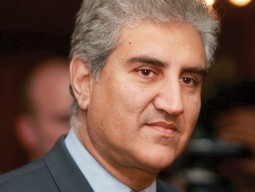
Incidents like Pulwama only provide fresh impetus to hostility between India and Pakistan. The unanticipated occasion, however, has seen Pakistan’s restrained response to India’s diplomatic offensive to position Pakistan as a country of little substance and more violence. Since the Mumbai attack that floundered the composite dialogue process, India has rejected every peace offensive with a single aim to isolate Pakistan. The problem with this policy is that it does not relate to the changing dynamic of regional politics, which is fast becoming dependent on the economic corporation for survival. It also shows that India has not been able to cast off the scars of partition from its national psychic. In Pakistan, however, there has been an awakening of a different kind.
When Prime Minister Imran Khan assumed power after last year’s general election, he invited India for dialogue. To dispel any doubt of the talks getting scuttled, Khan informed about the civil and military leadership being on the same page to resolve disputed matters between India and Pakistan with an emphasis on Kashmir. Then a letter was dispatched to India from the Prime Minister Office with an offer to arrange for foreign ministerial talks on the sidelines of the annual United Nation Security Council’s session. All these overtures were rejected.
Then came the Kartarpur corridor and suddenly Pakistan and India were on the same page. Not because of their own liking, but because of the political mileage, that the religious diplomacy offered both the countries. India is going to election in a few months, and Modi’s reputation has been called into question after the exposure of awarding $9 billion deal for manufacturing French jet fighters to a company with no experience to build planes. For a gloss over the corruption charges against him, Modi is extracting both Sikh and ultra-nationalist Hindu vote by portraying Pakistan as an enemy and a next-door friend.
The Pulwama attack has brought the Kashmir issue again to the centre stage of the world. As the conundrum unfolded the cries about the United Nations’ report exposing human rights violations in Kashmiris, got traction. If anything the mention of this report, every time that India puts up any offensive to paint as terrorism the Kashmiris’ struggle for freedom, builds a case against India.
Unless India decides to respond peace with peace — the model Pakistan has adopted — all conflicts from Mumbai to Kulbhushan to Pulwama will remain inconclusive. The psychology of retribution will only feed into the war hysteria.
There should be a limit to using Kashmir to get equal with Pakistan. Has anyone of late asked the Kashmiris what they want? Have they been called on international forums to present their case? Here one is not talking about the Kashmiri diaspora or those living on the other side of the Line of Control in Pakistan. What is their idea of liberation? Is it alliance with Pakistan or with India or none? Or is it liberation from their unmet needs for basic human rights that the Indian government has failed to provide. Treating Kashmiris like enemies or as a bulwark against an enemy has no relevance to the Kashmir solution.
The solution to Kashmir lies in talks. Joseph Engelbrecht, the international relations theorist, argues that the decision to terminate war results from a radical paradigm shift on the part of national decision-makers. Therefore, for any positive outcome both the countries have to look through this problem using a completely different lens.
Published in The Express Tribune, February 27th, 2019.
Like Opinion & Editorial on Facebook, follow @ETOpEd on Twitter to receive all updates on all our daily pieces.














































COMMENTS
Comments are moderated and generally will be posted if they are on-topic and not abusive.
For more information, please see our Comments FAQ